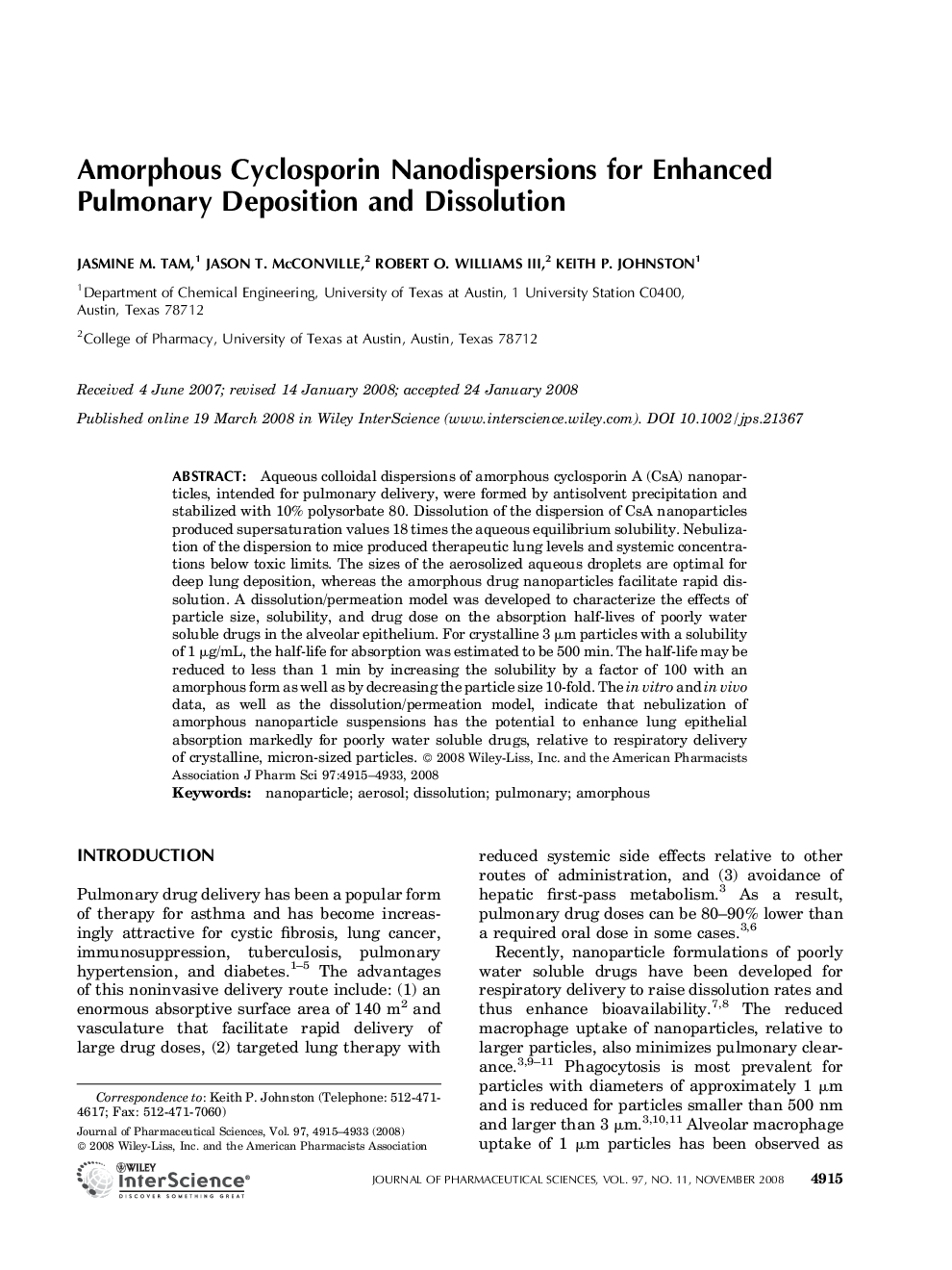| Article ID | Journal | Published Year | Pages | File Type |
|---|---|---|---|---|
| 2487483 | Journal of Pharmaceutical Sciences | 2008 | 19 Pages |
Abstract
Aqueous colloidal dispersions of amorphous cyclosporin A (CsA) nanoparticles, intended for pulmonary delivery, were formed by antisolvent precipitation and stabilized with 10% polysorbate 80. Dissolution of the dispersion of CsA nanoparticles produced supersaturation values 18 times the aqueous equilibrium solubility. Nebulization of the dispersion to mice produced therapeutic lung levels and systemic concentrations below toxic limits. The sizes of the aerosolized aqueous droplets are optimal for deep lung deposition, whereas the amorphous drug nanoparticles facilitate rapid dissolution. A dissolution/permeation model was developed to characterize the effects of particle size, solubility, and drug dose on the absorption half-lives of poorly water soluble drugs in the alveolar epithelium. For crystalline 3 µm particles with a solubility of 1 µg/mL, the half-life for absorption was estimated to be 500 min. The half-life may be reduced to less than 1 min by increasing the solubility by a factor of 100 with an amorphous form as well as by decreasing the particle size 10-fold. The in vitro and in vivo data, as well as the dissolution/permeation model, indicate that nebulization of amorphous nanoparticle suspensions has the potential to enhance lung epithelial absorption markedly for poorly water soluble drugs, relative to respiratory delivery of crystalline, micron-sized particles.
Related Topics
Health Sciences
Pharmacology, Toxicology and Pharmaceutical Science
Drug Discovery
Authors
Jasmine M. Tam, Jason T. McConville, Robert O. III, Keith P. Johnston,
